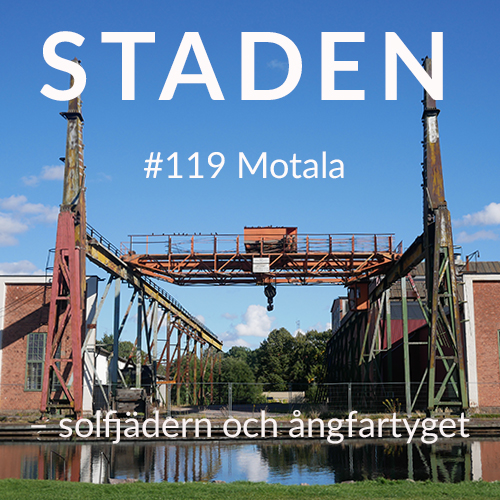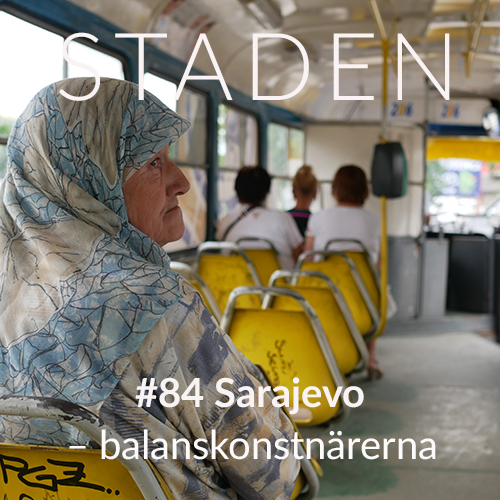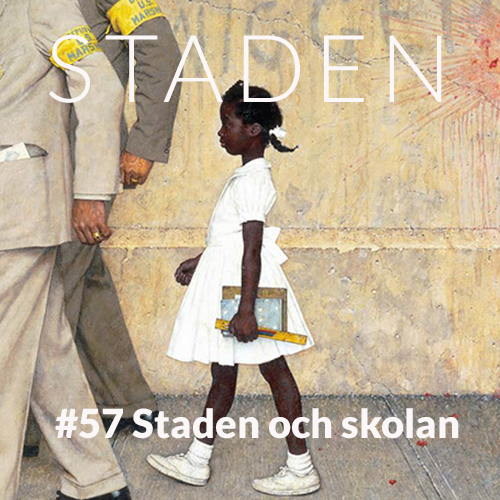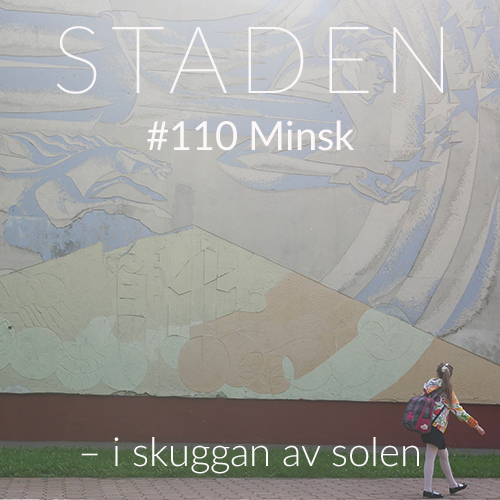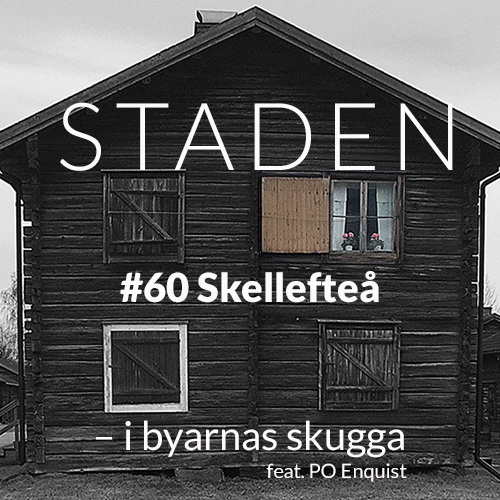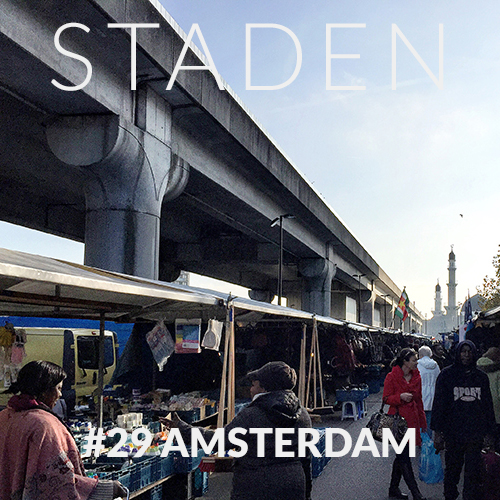Staden podcast – a podcast about cities
Basic information
Project Title
Full project title
Category
Project Description
The Podcast Staden/The City has since 2013 combined architectural and planning studies, field excursions, historical research and popular culture to discuss and scrutinize urban environments of today. Dan Hallemar, journalist and urban historian Håkan Forsell visit cities in Scandinavia, Europe and in the world. The podcast involves local experts, academics, activists and architects in each city to present a multilayered representation of the urban cultural history and the built environment.
Project Region
EU Programme or fund
Description of the project
Summary
The Swedish Podcast Staden/The City has since 2013 and through 126 episodes combined architectural and planning studies, field excursions, historical research and popular culture to discuss and scrutinize urban environments today.
Dan Hallemar, journalist and lanscape architect and urban historian Håkan Forsell visit cities in Scandinavia, in Europe and in the world and examine physical and mental changes in relation to urban politics, economics and ideology. The podcast involves local experts, academics, activists and architects in each city, and the production tries to get a glimpse of the essence of the place or a predominant urban theme.
The objective of the podcast is to connect different cultural disciplines with the materiality of the built urban environment and through field excursions and meetings with local experts, citizens and activits describe, discuss and analyze the historical trajectories of the existing urban fabric. The content always has the ambition to connect ot the streets, buildings and localities with a profound local meaning and history, local culture such as art and music, politics of different eras, and hence also conflicts between different ideologies and practices that have been and still are played out the urban settings.
Key objectives for sustainability
The podcast provides a tool for a lot of different disciplines, from people working with cultural heritage to architects; from an interested public to planners and students of urban planning. Through the podcast different experts, local politicians, architects and not least local inhabitants have become aware of common grounds and differences when valuating and dealing the the built environment. Since the podcast has an enhaused interest in historical trajectories and integration of heritage environment and architecture in contemporary every-day life and urban planning, the obvious focus on sustainability connects predominantly to this issue. The social effects of heritage use may be geared more strongly towards sustainability by questioning of the mere identity value by possibly move towards discussing the existential values of heritage use. The podcast wants to contribute to a more inclusive and socially engaging heritage valuation which means to overcome various actor communicative boundaries, such as between planners and heritage commissionaries, or politicans and local inhabitants.
Key objectives for aesthetics and quality
The podcast has carefully examined how a largely visual culture such as architecture and city planning can be communicated through sound media. The basic structure of the podcast is the dialogue, since ancient times the acknowledged mediating form of seeking knowledge and trying different assumptions and positions. The podcast presents a dialogue between the creators – one journalist/landscape architect and an academic/urban historian – that approach the built environment through different lenses, and the dialogue is the method to find knew understanding and to learn new ways of seeing. The quality in the transmission is depending on the quality of the dialogue between the participators but also on the inclusion of the listener in exploring an urban theme or a specific locality. The podcast is a platform for a bundle of communicating channels, it can not be stressed enough how much the podcast is depending on the curiosity and active participation of local inhabitants as well as listeners who are involved in shaping the production through feed-back and suggestions about themes, places and conflicting issues to further explore.
Key objectives for inclusion
As stated above, the inclusion of the listener in the exploration and field work we do in cities is central to the experience for the listener and for us in our understanding of the city or the urban environment in question.
Also then objective of the podcast has been to look at cities as part of a greater landscape, no city is an island. We include in our research and our visits the surrounding countryside and also what is usually looked upon as the periphery of the cities. As a matter of fact we try to travel to the cities with a method where we start not from the representative center but from the surrounding landscape and move towards the center so that when we arrive in a city center we have the landscape and the whole city, "in our bodies", so to speak.
One central idea with the podcast is the involvement of local experts, academics, activists and architects in each city. They are central to our knowledge and our dialogue with the city. The people who know and live in the cities are the true experts, it is through there experiences that we can possibly fathom parts of the city.
Results in relation to category
The audience of the podcast stretches between architects and planners to a wider interested public. Many of our listeners are university students in the fields of cultural geography, urban and economic history, sociology and anthropology, city planning and architecture. The podcast has been used as an educational tool in several courses in higher education in Sweden and Norway. The approximate average number of listeners per episode is 7000-10000, but some episodes has reached a number of over 20000 listeners.
The podcast has been awarded Digital Magazine of the Year in Sweden 2019 and recently in 2020 also Industrial Heritage Publication of the Year.
Through our podcast we have been able to create a space where cities and architecture is at eye level for everyone living in, working with, and studying cities.
How Citizens benefit
In each city that we visit with the podcast we will meet with academics working and with people working and living there, but also with politicians, heritage commissionaries and activists engaged in different questions. These diverse groups of informants are of absolute importance for the understanding of the city. There is no way that we can understand a city without them, in that case we would have to live there for 15 years.
The city is the arena for the civil society, the appreciation of the city is also important for the citizens. We try to explain what makes their city into what it is. There is a general misunderstanding that a lot of Swedish cities for example are alike, but we want to explain why they are not. The uniqueness of the city is what we are looking for and we have come to realize that the understanding of being part of something special is beneficial for the local community, We believe that each city has a story to tell, no matter how small. We do not approach the small town of Hudiksvall in any basic different way than for example Chicago.
Innovative character
When we started in 2013 podcasts and sound media as a tool for exploring urban or archictectural issues was not common. There has been an explosion in the use of sound media during the 4-5 years. We have through our eight years of experience created a unique knowledge base on how do research and transmit that knowledge a diverse groups of listeners in different fields of society and higher education. It has become an innovativ method, that combines the journalistic approach with the academic depth without loosing contact with our main focus: to educate ourselves and the listener to see the existing environment and its historical dependencies, with the help of sound and dialogue.

